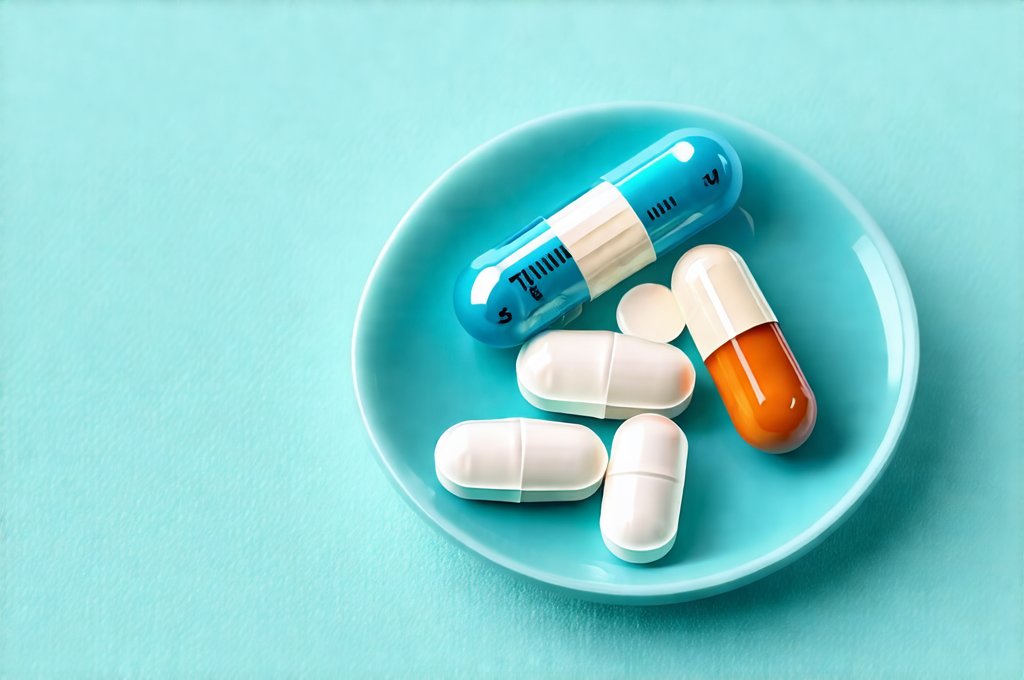Cystitis, often described as a urinary tract infection (UTI), is an incredibly common ailment, particularly among women. The frustrating reality is that many people initially seek treatment with antibiotics, expecting swift relief. However, what happens when those antibiotics don’t work? This leaves individuals feeling not only physically uncomfortable but also confused and anxious, wondering why the prescribed medication isn’t resolving their symptoms. It’s crucial to understand that antibiotic resistance is a growing concern, and there are numerous reasons why antibiotics might fail in treating cystitis, ranging from incorrect diagnosis to evolving bacterial strains and underlying health conditions.
This article aims to explore what steps to take if your initial course of antibiotics doesn’t alleviate your cystitis symptoms. We’ll delve into the possible causes for treatment failure, investigate alternative diagnostic approaches, discuss non-antibiotic management strategies, and highlight when it’s essential to seek further medical attention. It is important to emphasize that this information should not be considered a substitute for professional medical advice; rather, it’s intended as an educational resource to empower you to have informed conversations with your healthcare provider. Understanding the complexities of cystitis treatment can help ensure you receive the most appropriate and effective care.
Why Antibiotics Might Not Be Working
The assumption that cystitis always requires antibiotics is a simplification. While bacterial infections are often the culprit, other factors can mimic UTI symptoms or contribute to persistent issues. One major reason for antibiotic failure is antibiotic resistance. Overuse of antibiotics has led to bacteria evolving and becoming less susceptible to common medications. This means the initial antibiotic prescribed may simply not be strong enough to eliminate the infection. Another possibility is misdiagnosis; what feels like cystitis could actually be a different condition entirely, such as interstitial cystitis (painful bladder syndrome) which isn’t bacterial and therefore won’t respond to antibiotics.
Furthermore, underlying health conditions can play a role. Diabetes, for example, weakens the immune system, making it harder to fight off infection. Similarly, anatomical variations in the urinary tract or obstructions can trap bacteria, leading to recurrent infections that are difficult to treat with standard antibiotics. It’s also important to consider whether the initial antibiotic was taken correctly – completing the full course is vital, even if symptoms improve before completion, as stopping early can allow some bacteria to survive and develop resistance. Finally, co-existing vaginal infections (like thrush) or other inflammatory conditions can sometimes be mistaken for cystitis, leading to ineffective treatment with antibiotics. If antibiotics don’t stop UTI pain, it’s important to seek further guidance.
Alternative Diagnostic Approaches & Testing
If your initial antibiotic course fails, it’s critical to revisit diagnosis. A simple dipstick test in a doctor’s office isn’t always sufficient. More accurate testing is available to pinpoint the cause of your symptoms and guide appropriate treatment. – Urine culture: This involves growing bacteria from your urine sample to identify the specific type of bacteria causing the infection. It also performs antibiotic sensitivity testing, determining which antibiotics will be most effective against that particular strain. – Post-antibiotic urine culture: If a previous urine culture was done and an antibiotic prescribed based on those results, but it didn’t work, repeating the culture after completing the course of antibiotics can reveal if any bacteria remain or have developed resistance.
Beyond bacterial cultures, consider exploring tests to rule out other conditions mimicking cystitis. These may include: – Microscopic hematuria testing: To check for blood in urine, which could indicate a different issue. – Pelvic examination: To assess for vaginal infections or anatomical abnormalities. – Cystoscopy: In rare cases, if symptoms are chronic and unexplained, a cystoscopy (a procedure to view the inside of the bladder) may be necessary to rule out other causes like interstitial cystitis or bladder stones. Don’t hesitate to advocate for thorough testing with your healthcare provider; understanding the root cause is essential for effective treatment. If you can’t pee but feel urgency, exploring these alternative tests could provide answers.
Understanding Interstitial Cystitis/Bladder Pain Syndrome
Interstitial Cystitis (IC), also known as Bladder Pain Syndrome, often gets mistaken for recurring UTIs because many of the symptoms overlap – frequent urination, urgency, pelvic pain, and discomfort during intercourse. However, IC isn’t caused by a bacterial infection; it’s a chronic condition characterized by inflammation and irritation of the bladder lining. Unlike cystitis caused by bacteria, antibiotics are entirely ineffective for IC. Diagnosis is often challenging as there isn’t one definitive test. It typically involves ruling out other conditions (like UTIs) and assessing your symptom history.
Managing IC requires a multi-faceted approach focusing on symptom relief rather than eradication of an infection. This might include: – Dietary modifications: Avoiding bladder irritants like caffeine, alcohol, acidic foods, and artificial sweeteners can significantly reduce symptoms. – Pelvic floor physical therapy: Strengthening pelvic floor muscles can help support the bladder and alleviate pain. – Pain management techniques: Including medications (under a doctor’s supervision) and alternative therapies like acupuncture or mindfulness. – Bladder training: Learning to control urination frequency and capacity through scheduled voiding. If bladder pain interrupts sleep, understanding IC could be crucial for finding relief.
The Role of Probiotics & D-Mannose
While antibiotics are often the first line of defense for bacterial cystitis, there’s growing evidence supporting complementary approaches that can help prevent recurrence and potentially manage milder infections. Probiotics, beneficial bacteria naturally found in the gut, play a role in maintaining a healthy microbiome which can bolster immune function and outcompete harmful bacteria in the urinary tract. Specifically, strains like Lactobacillus rhamnosus GR-1 and Lactobacillus reuteri RC-14 have shown promise in preventing UTI recurrence.
D-Mannose is a naturally occurring sugar found in cranberries (though more concentrated supplements are often used). It works by preventing E. coli – the most common bacteria causing UTIs – from adhering to the bladder wall, allowing it to be flushed out during urination. While D-mannose isn’t a substitute for antibiotics in acute infections requiring immediate treatment, it can be a useful preventative measure and may help manage mild symptoms. It’s vital to discuss these complementary therapies with your doctor before starting them, as they aren’t suitable for everyone and might interact with other medications. If UTI comes back after 2 weeks, exploring alternative preventative measures like probiotics could be beneficial.
When To Seek Further Medical Attention
Knowing when to escalate care is crucial. If antibiotics have failed and your symptoms persist or worsen, don’t delay seeking further medical attention. Red flags include: – Fever: Indicates a potentially more serious infection that may have spread beyond the bladder. – Back pain or flank pain: Could signal a kidney infection (pyelonephritis), which is a medical emergency. – Blood in your urine: While sometimes present in cystitis, persistent blood requires investigation. – Severe pelvic pain: Suggests a possible complication or underlying condition requiring specialized care.
If you’ve experienced multiple recurrent UTIs despite appropriate antibiotic treatment, referral to a urologist (a specialist in urinary tract health) is advisable. A urologist can perform more advanced diagnostic testing and recommend long-term management strategies tailored to your individual needs. Remember that proactive communication with your healthcare provider is key to receiving the best possible care. Don’t hesitate to advocate for yourself and ask questions until you feel confident you understand your diagnosis and treatment plan. If your UTI antibiotics cause side effects, consulting a urologist could offer alternative solutions.





















